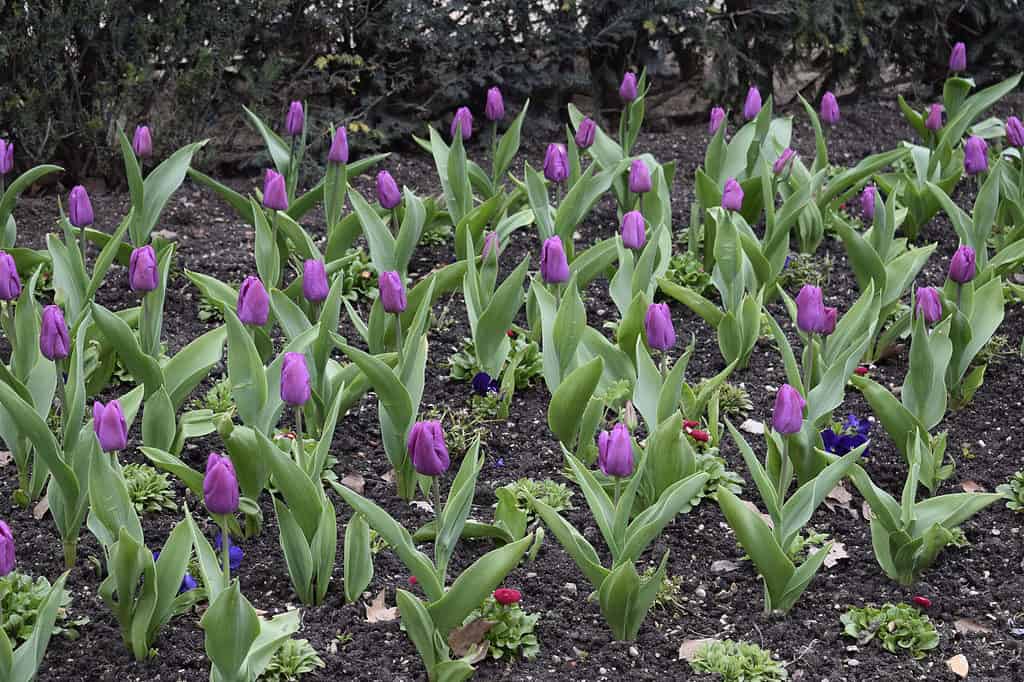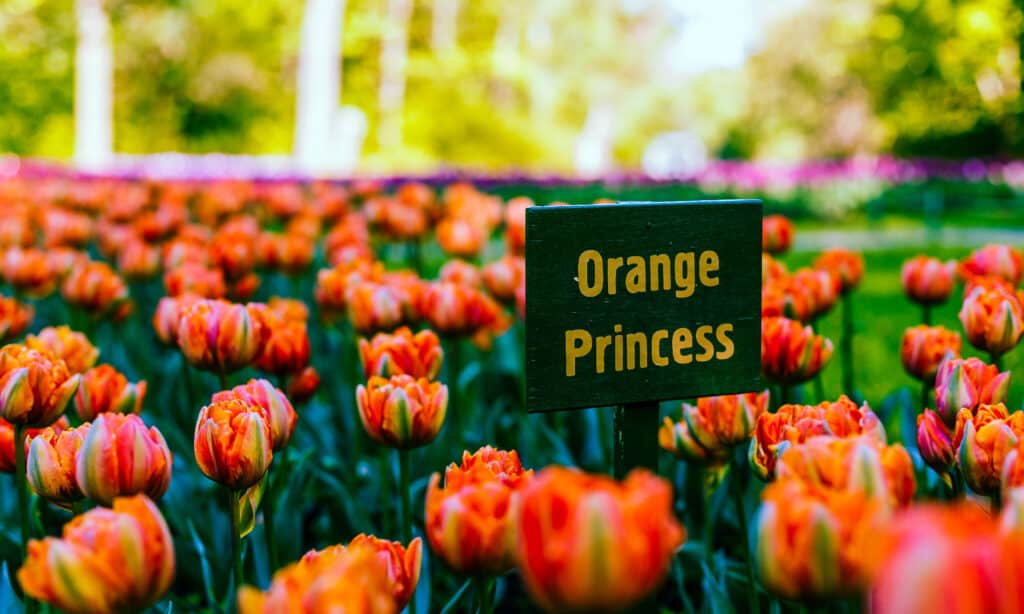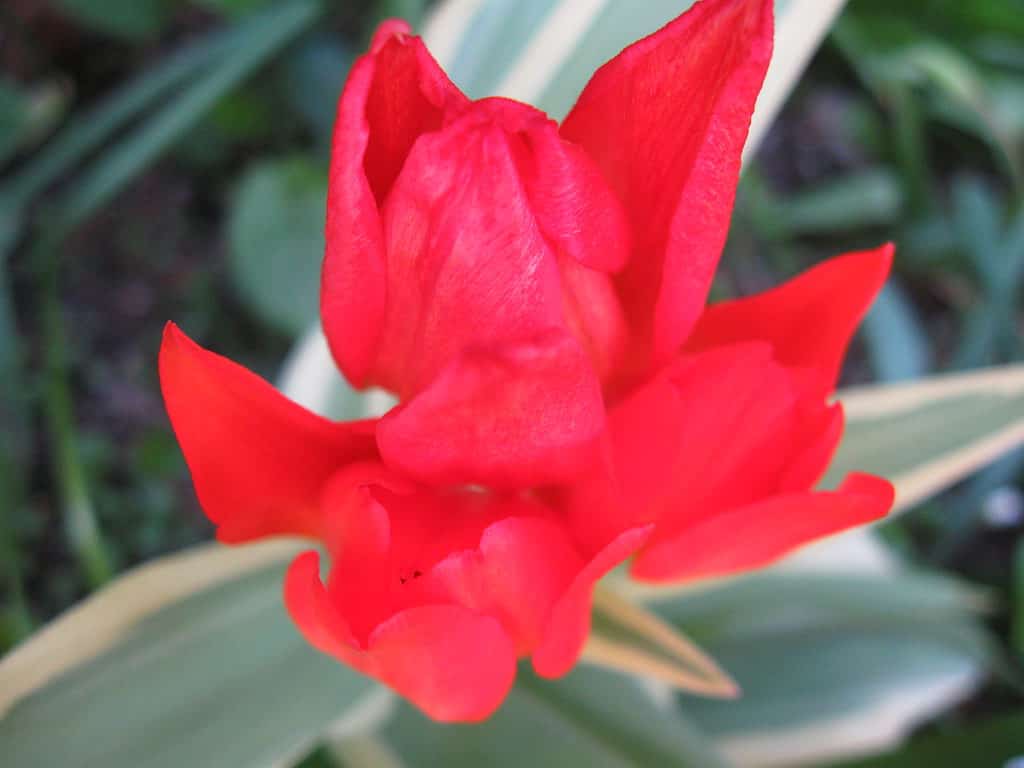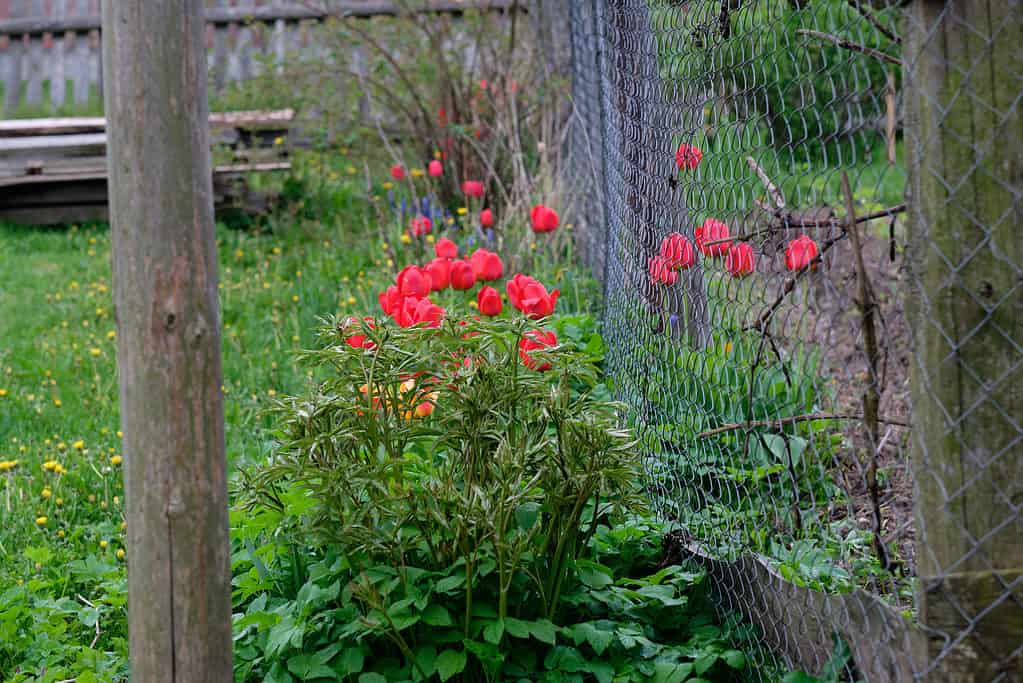The tulip, which belongs to the Liliaceae family, is a spring-blooming perennial bulb that can withstand a light freeze. This flower has been cultivated since the Ottoman Empire and was first introduced to Europe in the 1500s. The Dutch were so captivated by this bloom that they even created a futures trading market for tulip bulbs, known as “tulip mania,” during the 17th century. Bulbs, or herbaceous bulbous plants, are a great way to start off an array of colorful flowers throughout the growing season!
Gardening Climate
The gardening climate in West Virginia is generally favorable for growing a variety of plants. The state has a diverse range of climates and temperatures, depending on the region you live in. In general, summers are warm and humid, with temperatures usually reaching into the mid-80s Fahrenheit. Winters can be cold, but this is good news for tulips, which require a 12-16 week period under 45 degrees. Overall West Virginia provides an ideal climate for gardeners looking to cultivate a wide variety of plants!
Types of Tulips to Grow in West Virginia
When selecting tulips to grow in West Virginia, it is important to choose varieties that can withstand the climate. Tulips do best in climates with cold winters and warm springs. In West Virginia, there is a wide selection of tulips to choose from.
1. Purple Prince
The ‘Purple Prince’ Triumph tulips are a deep, regal purple, and they last a long time in the spring. The petals of these blooms have a slight scallop to them, adding dimension. Single early tulips form cup-like flowers and have sturdy stems which can hold up under strong spring storms. This flower symbolizes love and everlasting joy. It grows between 14-18 inches tall.

The ‘Purple Prince’ Triumph tulips are a deep, regal purple, and they last a long time in the spring.
©iStock.com/Wirestock
2. Affaire
The ‘Affaire’ Triumph tulip is a beautiful two-toned flower with white petals and pink edges that blossoms in the middle of spring. It thrives in full sunlight and soil that has good drainage. When planted alongside other pink tulips like ‘Don Quichotte’ and ‘Pink Impression’, it makes for a fun and fancy display! The ‘Affaire’ Triumph tulip typically reaches a height of 12-18 inches.
3. Apeldoorn’s Elite
You won’t regret giving ‘Apeldoorn’s Elite’ Darwin hybrid tulip a try! It features dazzling red petals with thick golden-yellow edging, making it a great addition to any garden. As a perennial tulip, it’s perfect for cutting and can grow up to 22-24 inches tall. Not only does it look beautiful in a vase, but it also symbolizes ideal love and lasting bliss!

The ‘Apeldoorn’s Elite’ tulip variety features dazzling red petals with thick golden-yellow edging.
©iStock.com/NVS
4. Banja Luka
The ‘Banja Luka’ tulip has a spectacular coloration and is great for perennializing. It produces 5-inch tall bell-shaped blooms of marigold yellow with ruby-red feathery outlines. This tulip is an eye-catcher and is best used in borders or as cut flowers, as it will outshine other less vibrant blooms.

The ‘Banja Luka’ tulip produces bell-shaped blooms of marigold yellow with ruby-red feathery outlines.
©Liviu Gherman/Shutterstock.com
5. Orange Princess
These vibrant, eye-catching flowers look very similar to peonies. This award-winning variety has tall, four-inch double blooms with bright orange petals, purple flames, a yellow center, and green tips. The center of the flower has a reddish-brown hue. This variety is great for cutting and displaying in a bouquet!

The ‘Orange Princess’ tulip has tall, four-inch double blooms with bright orange petals, purple flames, a yellow center, and green tips.
©Flower_Garden/Shutterstock.com
6. Firespray
Treat yourself to a gorgeous display of red flowers with a light fragrance. Every single stem boasts a bunch of 3-5 flowers, nearly a whole bouquet! The ‘Firespray’ variety is perfect for lining a border and will come back year after year since it propagates easily. Growing between 8-12 inches tall, these tulips will be in bloom during mid-spring.

The ‘Firespray’ tulip produces a gorgeous display of red flowers with a light fragrance.
©Ed / Flickr – License
What To Do With Tulips After Flowering
The short answer is nothing. Tulips need a period of at least six weeks to store energy for next year. They use their strappy foliage to photosynthesize and send energy downward into the underground bulb. That energy will be used next year to grow new flowers! So, do not trim or mow down tulip foliage right away. Give it a couple of months to do its important work. If you don’t like looking at the ugly leaves, you can braid them to tidy things up or plant your tulips behind perennial grasses, which will hide them nicely.
Animals That Eat Tulips
In West Virginia, several animals may be spotted munching on tulip foliage and flowers. Deer and rabbits are especially fond of the foliage and will munch them right down to the ground.
Several animals will dig up the bulbs and eat them for a snack. Generally, mice will be the main culprits, but additionally, squirrels, chipmunks, voles, and gophers may also feast on the bulbs. Moles will not consume the bulbs or roots of plants, even if gardeners tend to think so.
How To Keep Critters Out
The only foolproof way to keep deer and rabbits out of your tulip garden is a protective fence or border. Some gardeners have had success with planting the bulbs in special chicken-wire cages. This allows the foliage to grow up through the gaps but doesn’t allow the digging animals to eat the bulbs. It is also possible to mulch the area with sharp gravel to prevent diggers.

The only foolproof way to keep deer and rabbits out of your tulip garden is a protective fence or border.
©iStock.com/Ihar Halavach
Do Bigger Bulbs Mean Bigger Flowers?
The size of the bulbs can have a significant effect on the size of the flowers. Bulbs that are larger tend to store more energy, which is necessary for producing bigger and more vibrant blooms. When planting tulips in West Virginia, it may be beneficial to choose larger bulbs if you want to ensure that your plants produce large and beautiful flowers come springtime.
In addition, selecting larger bulbs can help provide greater hardiness when dealing with colder winters or erratic weather conditions. The extra energy stored in these bulbs helps them survive harsher climates better than smaller ones would due to their ability to grow faster once warmer temperatures return again in early spring.

When planting tulips in West Virginia, it may be beneficial to choose larger bulbs to ensure that your plants produce large and beautiful flowers.
©Natallia Ustsinava/Shutterstock.com
Will A Hard Freeze Kill Tulips?
A hard freeze, defined as temperatures below freezing for a prolonged period of time, can be detrimental to tulips. With that said, the severity of the damage depends on how far along in its growth cycle the flower was when it was exposed to cold temperatures. Tulips are very tolerant of cold. If a bud is closed and still has some protection from snow or ice, it will likely survive and bloom. However, if it’s an open bloom already, then there’s a greater chance of frostbite causing discoloration or death.
If your tulip does suffer from frostbite due to freezing weather conditions, don’t give up hope just yet! The plant itself will survive and give you beautiful blooms next year!
Why Are Tulip Leaves Waxy?
Tulip leaves contain a waxy coating known as the cuticle. This wax is composed of large molecules of carbon and hydrogen, and it serves the purpose of helping the leaf retain moisture, similar to how waxed paper helps preserve a sandwich. Additionally, the top layer of the leaf, called the epidermis, can be easily peeled off. If you look at the leaf and its epidermis with a microscope, it is a very interesting sight!
Can I Plant Tulips in Clay Soil?
Tulips do not grow well in thick clay. The soil gets wet and stays wet, causing the bulbs to drown and rot. Another factor is clays’ ability to get extremely hard when it dries out. The shoots of the bulbs are not strong enough to break through this barrier. The bulbs that do overcome these challenges use up a lot of energy doing so and end up with small spindly blooms.
If you have clay soil, the best option is to add a lot of organic material before planting tulips. You can add sand, compost, leaf mold, or other materials to the soil to change the texture and make it more hospitable to tulip bulbs.
Summary of 6 Tulips That Grow Beautifully in West Virginia
| Tulip | Color | Height |
|---|---|---|
| Purple Prince | Purple | 14-18 inches |
| Affaire | White and with deep pink edges | 12-18 inches |
| Apeldoorn’s Elite | Red and Yellow | 22-24 inches |
| Banja Luka | Yellow and Red | 20-24 inches |
| Orange Princess | Orange with light purple stripes | 14-22 inches |
| Firespray | Red | 8-12 inches |
Up Next
- Discover the Deepest Lake in West Virginia
- Discover West Virginia’s Only Rattlesnake Species
- 9 Native Plants in West Virginia
The photo featured at the top of this post is © Nahhana/Shutterstock.com
Thank you for reading! Have some feedback for us? Contact the AZ Animals editorial team.






